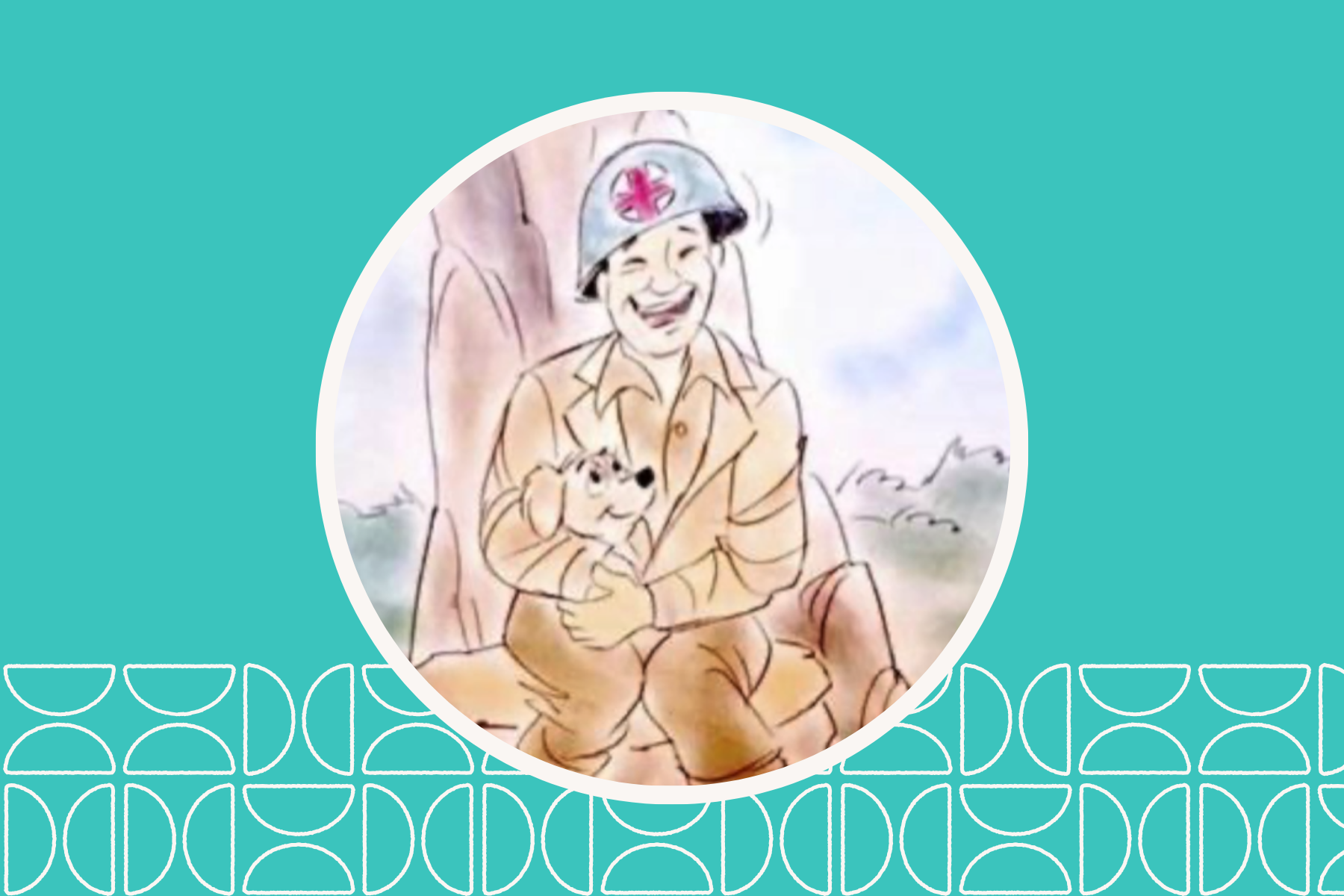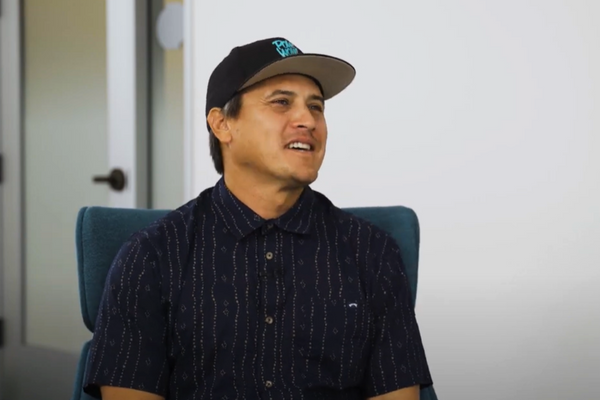Resources
Resources
Bringing History to Life: The Story of Lucy and the 442nd Regimental Combat Team
How a Puppy Brought a Passionate Historian and Famed Animator Together to Tell an Untold WWII Story – and How She’s Related to CPB
At first glance, The Story of Lucy is a heartwarming children’s book about a spirited little dog who became the beloved mascot of the 442nd Regimental Combat Team’s (RCT) medics. Behind this seemingly simple story, however, is a much deeper tale – one of resilience, loyalty, and the unbreakable spirit of the Japanese American soldiers who fought in World War II.
In this video, Lucy’s creator, author Stacey Hayashi, a filmmaker and historian dedicated to preserving the stories of the legendary 100th Battalion and 442nd RCT, and illustrator Willie Ito, an acclaimed animator whose career spans Disney, Hanna-Barbera, and Warner Bros., take us on a journey through history.
Meet the Creator and Illustrator: Stacey Hayashi and Willie Ito
Creator and Author
Stacey Hayashi is a local storyteller at heart. A Hawaii girl and fourth-generation Japanese American, Stacey became a historian and subject matter expert on the AJA – American of Japanese Ancestry – soldiers of the 100th Battalion, 442nd RCT, and Military Intelligence Service. She did so by spending the majority of her adult years with them: listening to their stories and then documenting and sharing their legacy. She’s done so through films, books, and community outreach, making their heroic accomplishments accessible and known to younger generations who will, sadly, never know the vets themselves as they pass with time.
Most notably among her work, her manga, or graphic novel, Journey of Heroes: The Story of the 100th Infantry Battalion and 442nd Regimental Combat Team and film GO FOR BROKE: AN ORIGIN STORY, helped shed light on the incredible sacrifices of these soldiers, who, over the years, became some of her dearest friends and strongest supporters. When she discovered a forgotten piece of their history – Lucy, the real-life puppy mascot adopted by the medics – she knew it was a story worth telling.
Illustrator
Willie Ito grew up in San Francisco’s Japan Town. At just eight years old on December 7, 1941, his world was upended when his family was forcibly relocated to Topaz, an American concentration camp during World War II, bringing only what they could carry. Behind barbed wire, young Willie found ways to practice his craft, creating flipbooks out of Sears catalogs.
That early passion for animation led him to an incredible career at Walt Disney Studios, where he worked on Lady and the Tramp at age 19, his first job being the now-iconic spaghetti kiss scene. He later brought life to classics like Scooby-Doo, The Jetsons, and Hong Kong Phooey during his 14 years at Hanna-Barbera before returning to Disney in 1976, where he worked on Disney’s foray to tv cartoons and later, Disney Consumer Products, retiring in 1999.
The Story of Lucy
In the summer of 1944, deep in war-torn Italy, beleaguered and traumatized from treating the wounded in their fiercest battle yet, a group of 442nd medics stumbled upon a litter of puppies. A deal was struck with their owners – a group of kids – and a puppy was selected and procured, traded for some candy. She was proclaimed their mascot by the soldiers, who named her Lucy after the village of Luciana where she was born.
The horrors of war surrounding them, these battle-weary medics found solace and comfort in Lucy, who became a symbol of hope and resilience. The soldiers fed her with an eyedropper, got her own dog tags, and took her everywhere with them on their journey across Europe. She was more than just a pet – she was a reminder of home, of peace, and of the kindness that still existed even in the darkest times.
Lucy’s story was nearly lost to history – until Stacey came across all the many photos of her sprinkled prominently throughout her dear friend and collaborator on many projects, 442nd/I Company veteran Eddie Yamasaki’s, photo album. Seeing all the photos of each medic posing happily with Lucy, group photos with Lucy at the center, and photos of Lucy at different stages of growth from a pup to adulthood to having her own litter of puppies, Stacey realized immediately how much this little dog had meant to the men and lifted their spirits. She knew she had to bring Lucy’s story to life. However, she had only recently published Journey of Heroes, and her illustrator was still recovering from drawing the epic and emotional scenes, and refused to draw Lucy.
So, Lucy’s story sat, untold, for 11 more years, until the coronavirus pandemic brought with it a silver lining.
Central Pacific Bank
Beyond its historical and emotional significance, Lucy has another connection – many actually – this time to Central Pacific Bank (CPB).
CPB was founded over 70 years ago by veterans of the 100th Battalion and 442nd RCT – men who had returned from war as highly decorated soldiers but still faced discrimination back home in Hawaii. Many banks refused to give them loans. So, they built their own.
Among CPB’s founding members was Sakae Takahashi, a 100th Battalion veteran who served as the bank’s first chairman, and U.S. Senator Daniel Inouye, a 442nd RCT veteran and Congressional Medal of Honor recipient, who helped shape modern Hawaii. Takahashi and Inouye are actually depicted in Stacey’s manga, Journey of Heroes, and Senator Inouye’s letter of support in the manga is one of the last letters he wrote before passing away in 2012, a few short weeks after the manga was published. These men fought not just on the battlefield but also for economic equality and opportunity at home, after the war ended.
Stacey points out the historic connection:
"These vets came back as decorated war heroes, but they still couldn’t get loans. What’s up with that? So, they got together and decided to change things. That’s why they started CPB."
Just like Lucy is a story of perseverance, CPB’s history is a testament to the resilience of the 100th/442nd RCT and their lasting impact on Hawaii.
It’s not just the historic connection, though. For Stacey it has always been personal. CPB was never just a bank. They were friends, supporters, allies – volunteers at Stacey’s veteran events, and extras in her movie. She credits CPB’s Mike Masuda in particular, who she actually met at Club 100 (the 100th Infantry Battalion Veterans’ Clubhouse), volunteering for the vets, years ago:
“Working on all these projects with and for the vets, you meet a lot of people, work with a lot of different types. Mike is an invaluable resource – he’s full of good ideas, and he really rallied the [CPB] troops when we [the vets] needed manpower. He just cares… that is so rare in today’s transactional world. That’s the kind of banker you want, that money can’t buy.”
And, because the veterans founded CPB, it was natural that the veterans’ clubs opened their club and chapter bank accounts at CPB. In their later years, they stopped driving and enlisted Stacey for administrative help, too:
“Able Chapter, or A Company at Club 100 needed someone young enough, who still drove, to be their Treasurer and cut and deposit checks, so they added me to their signature card. And when I saw their checks with the account number on it, I thought, wow, I’m signing checks for the 57th bank account ever opened at CPB, for vets that helped found the bank. That’s pretty cool.”
The funds for Stacey’s acclaimed, award-winning movie about the 100th/442/MIS veterans were all safeguarded and entrusted to the account of the 442nd RCT Foundation at CPB. She says:
“Obviously I’m biased because of the subject of my life’s work include some of the founders of CPB, but that’s special. Not every bank was founded by the most highly decorated unit in U.S. military history, for people like me. Just one: CPB.”
Lucy herself also has personal ties to CPB. Her chief photographer, 442nd/I Company veteran Eddie Yamasaki, worked for CPB many years ago. He even approved a loan for I Company vets to lease a beach house in Hau’ula, and it was the site of many enjoyable get-togethers for the Item Chapter veterans and their families from both Hawaii and the mainland, during their reunions. For those who know the story of the 100th/442nd rescuing the Lost Battalion of Texas from certain death when they were surrounded by Nazis in the Vosges Mountains in October 1944, it was I Company that was the first to reach them.
Why Lucy Matters Today
Lucy is more than just a book – it’s a way to teach the next generation – or dog lover adults – about an important part of history.
From the beginning, Stacey knew a cute, anime style would make the story of the 100th/442nd more accessible to kids, as manga is so popular these days. That’s why the art style in Journey of Heroes is “chibi” style, or very cute. The approach was very effective.
For Lucy, Stacey wanted a similar cute look, but knew Ito’s style naturally following animation work he did for Disney and Hanna Barbera would appeal to nostalgic adults who grew up watching cartoons after school or on Saturdays.
Also, this is an important story about real people from Hawaii, heroes no longer with us. For example, it was Hawaii boy Howard Kozuma, who brought Lucy back to Hawaii after the war ended. It was important to Stacey to include photos of the real Lucy and the medics who loved her in the back of the book.
How You Can Support Lucy
If you’re interested in learning more about Lucy and sharing this incredible story with the next generation, the book is available for purchase at 442lucydog.com. By reading and sharing Lucy, you’re not just buying a book – you’re helping to preserve a legacy.
And, if you’re interested in learning more about the 100th/442nd RCT, Stacey’s historically accurate manga, Journey of Heroes: The Story of the 100th Battalion and 442nd Regimental Combat Team, is available for purchase at 442comicbook.com/shop.html.
Watch the full interview with Stacey Hayashi and Willie Ito and discover the remarkable story of a little dog who helped soldiers through one of the most challenging times in history.
Offering expert insights on a variety of topics such as home affordability, small business growth, international economic trends, and digital banking.




 Share
Share


